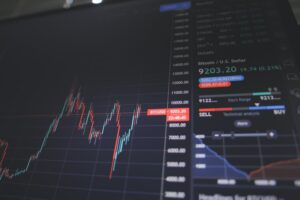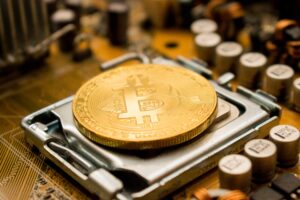Bitcoin
Bitcoin is a digital currency that was created in January 2009, bitcoin is the world’s largest cryptocurrency by market capitalization. It follows the ideas set out in a whitepaper by the enigmatic and pseudonymous Satoshi Nakamoto. The identity of the person or persons who created the technology is still a mystery.
What is the use of Bitcoin?
Bitcoin is created, distributed, operated, traded, and stored with the use of a decentralized ledger system, known as a blockchain unlike government-issued currencies. Bitcoin offers the promise of lower transaction fees than traditional online payment mechanisms.
Bitcoin is a type of cryptocurrency. There are no physical bitcoins, only balances kept on a public ledger that everyone has to transparent access. All bitcoin transactions are verified by a huge amount of computing power. Bitcoins are not issued or backed by any banks or governments, nor an individual. Bitcoins are valuable as a commodity. Despite it not being legal tender, Bitcoin is very popular and has triggered the launch of hundreds of other cryptocurrencies, collectively referred to as “altcoins”.
History of the cryptocurrency “Bitcoin”
Bitcoin’s history as a store of value has been turbulent; ;In July 2010, bitcoin began trading at a value of US$0.0008. The cryptocurrency skyrocketed up to roughly $20,000 per coin in 2017, but less than years later, it was trading for less than half of that. And now a days its trading price is around USD 59,000 of one BTC.
Price history since 2013 to March 2021 is as follow in graphical presentation: (Source is coindesk.com)
Bitcoin is commonly abbreviated as "BTC."
What is Bitcoin Mining?
Bitcoin mining is the process by which bitcoins are released into circulation. Generally, mining requires the solving of computationally difficult puzzles in order to discover a new block, which is added to the blockchain.
Bitcoin mining adds and verifies transaction records across the network. For adding blocks to the blockchain, miners are rewarded with a few bitcoins; the reward is carved up every 210,000 blocks. The block reward was 50 new bitcoins in 2009. On May 11th, 2020, the third halving occurred, bringing the reward for each block discovery down to 6.25 bitcoins.
A variety of hardware can be used to mine bitcoin. However, some yield higher rewards than others. Certain computer chips, called Application-Specific Integrated Circuits (ASIC), and more advanced processing units, like Graphic Processing Units (GPUs), can achieve more rewards. These elaborate mining processors are known as “mining rigs.”
One bitcoin is divisible to eight decimal places (100 millionths of one bitcoin), and this smallest unit is referred to as a Satoshi. If necessary, and if the participating miners accept the change, bitcoin could eventually be made divisible to even more decimal places.
Want to learn more about cryptos? There's a lot to learn. Learn cryptocurrency, blockchains, algorithmic trading, financial analysis, algorithmic trading, the stock market, and more in The Complete Python for Finance: Learn to Trade in 99 Days.




